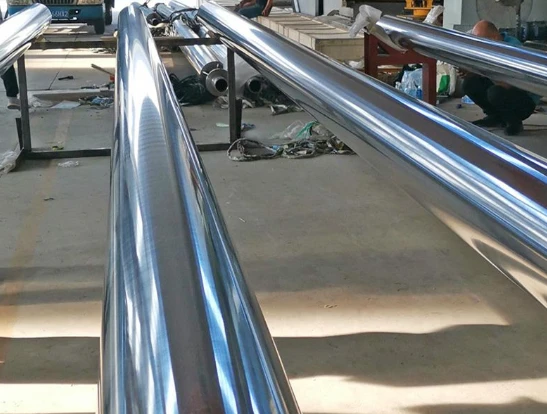
-
 Afrikaans
Afrikaans -
 Albanian
Albanian -
 Amharic
Amharic -
 Arabic
Arabic -
 Armenian
Armenian -
 Azerbaijani
Azerbaijani -
 Basque
Basque -
 Belarusian
Belarusian -
 Bengali
Bengali -
 Bosnian
Bosnian -
 Bulgarian
Bulgarian -
 Catalan
Catalan -
 Cebuano
Cebuano -
 China
China -
 China (Taiwan)
China (Taiwan) -
 Corsican
Corsican -
 Croatian
Croatian -
 Czech
Czech -
 Danish
Danish -
 Dutch
Dutch -
 English
English -
 Esperanto
Esperanto -
 Estonian
Estonian -
 Finnish
Finnish -
 French
French -
 Frisian
Frisian -
 Galician
Galician -
 Georgian
Georgian -
 German
German -
 Greek
Greek -
 Gujarati
Gujarati -
 Haitian Creole
Haitian Creole -
 hausa
hausa -
 hawaiian
hawaiian -
 Hebrew
Hebrew -
 Hindi
Hindi -
 Miao
Miao -
 Hungarian
Hungarian -
 Icelandic
Icelandic -
 igbo
igbo -
 Indonesian
Indonesian -
 irish
irish -
 Italian
Italian -
 Japanese
Japanese -
 Javanese
Javanese -
 Kannada
Kannada -
 kazakh
kazakh -
 Khmer
Khmer -
 Rwandese
Rwandese -
 Korean
Korean -
 Kurdish
Kurdish -
 Kyrgyz
Kyrgyz -
 Lao
Lao -
 Latin
Latin -
 Latvian
Latvian -
 Lithuanian
Lithuanian -
 Luxembourgish
Luxembourgish -
 Macedonian
Macedonian -
 Malgashi
Malgashi -
 Malay
Malay -
 Malayalam
Malayalam -
 Maltese
Maltese -
 Maori
Maori -
 Marathi
Marathi -
 Mongolian
Mongolian -
 Myanmar
Myanmar -
 Nepali
Nepali -
 Norwegian
Norwegian -
 Norwegian
Norwegian -
 Occitan
Occitan -
 Pashto
Pashto -
 Persian
Persian -
 Polish
Polish -
 Portuguese
Portuguese -
 Punjabi
Punjabi -
 Romanian
Romanian -
 Russian
Russian -
 Samoan
Samoan -
 Scottish Gaelic
Scottish Gaelic -
 Serbian
Serbian -
 Sesotho
Sesotho -
 Shona
Shona -
 Sindhi
Sindhi -
 Sinhala
Sinhala -
 Slovak
Slovak -
 Slovenian
Slovenian -
 Somali
Somali -
 Spanish
Spanish -
 Sundanese
Sundanese -
 Swahili
Swahili -
 Swedish
Swedish -
 Tagalog
Tagalog -
 Tajik
Tajik -
 Tamil
Tamil -
 Tatar
Tatar -
 Telugu
Telugu -
 Thai
Thai -
 Turkish
Turkish -
 Turkmen
Turkmen -
 Ukrainian
Ukrainian -
 Urdu
Urdu -
 Uighur
Uighur -
 Uzbek
Uzbek -
 Vietnamese
Vietnamese -
 Welsh
Welsh -
 Bantu
Bantu -
 Yiddish
Yiddish -
 Yoruba
Yoruba -
 Zulu
Zulu
frp scrubber
Understanding FRP Scrubbers A Comprehensive Overview
In today's industrial landscape, environmental sustainability and compliance with stringent emissions regulations are paramount. One technology that has emerged as a vital solution in managing air pollution is the Fiber Reinforced Plastic (FRP) scrubber. This innovative device plays a crucial role in industries such as chemical manufacturing, power generation, and waste management, facilitating the removal of harmful particulates and gases from exhaust streams before they are released into the atmosphere.
What is an FRP Scrubber?
FRP scrubbers are air pollution control devices that utilize a combination of physical and chemical processes to treat gases emitted from industrial processes. Constructed from fiber-reinforced plastics, these scrubbers are known for their durability, resistance to corrosion, and lightweight properties. This makes them particularly ideal for handling aggressive chemicals commonly found in industrial emissions.
The scrubber operates by mixing the contaminated gas with a scrubbing liquid. The unit typically includes an inlet for contaminated gas, a vessel for the scrubbing liquid, and an outlet through which treated gases are released. The scrubbing liquid can either be water or a chemical solution specifically designed to react with and neutralize the targeted pollutants.
How Do FRP Scrubbers Work?
The operation of FRP scrubbers can be described in several steps
1. Gas Inlet Contaminated gases enter the scrubber through an inlet. At this point, the flow rate and composition of the gas are important in determining how the scrubber will be optimized for maximum removal efficiency.
frp scrubber

2. Contact with Scrubbing Liquid As the gas flows through the scrubber, it is met with the scrubbing liquid, which is circulated within the unit. The gas and liquid come into contact through various mechanisms such as spray, jet, or packed bed arrangements.
3. Absorption During the interaction, various pollutants are absorbed or chemically reacted with the scrubbing liquid. Common targets include volatile organic compounds (VOCs), sulfur dioxide (SO2), hydrogen sulfide (H2S), and particulate matter.
4. Separation After the scrubbing process, the treated gas exits the scrubber, while the scrubbing liquid, now containing the captured contaminants, is either treated further or disposed of according to environmental regulations.
5. Exit The cleaned gas is released into the atmosphere, compliant with emission standards set forth by regulatory authorities.
Benefits of FRP Scrubbers
The advantages of using FRP scrubbers are numerous - Corrosion Resistance Unlike traditional materials, FRP is resistant to the corrosive nature of many chemicals, extending the lifespan of the equipment and reducing maintenance costs. - Customization FRP scrubbers can be designed and tailored to meet specific requirements and challenges faced by different industries or processes. - Efficiency in Pollutant Removal These scrubbers can achieve high efficiencies in removing a wide range of pollutants, making them a versatile choice for many applications. - Cost-Effective With their durability and reduced maintenance needs, FRP scrubbers can offer a lower total cost of ownership over time.
Conclusion
As industries continue to adapt to rising environmental standards and public scrutiny over emissions, the role of FRP scrubbers becomes increasingly critical. Their effectiveness in removing harmful pollutants from industrial waste gas streams, coupled with their durability and customization options, positions them as a key technology in the quest for a cleaner and more sustainable industrial future. With ongoing advancements in technology and materials, FRP scrubbers will likely continue to evolve, further enhancing their efficacy and applications in air pollution control.









